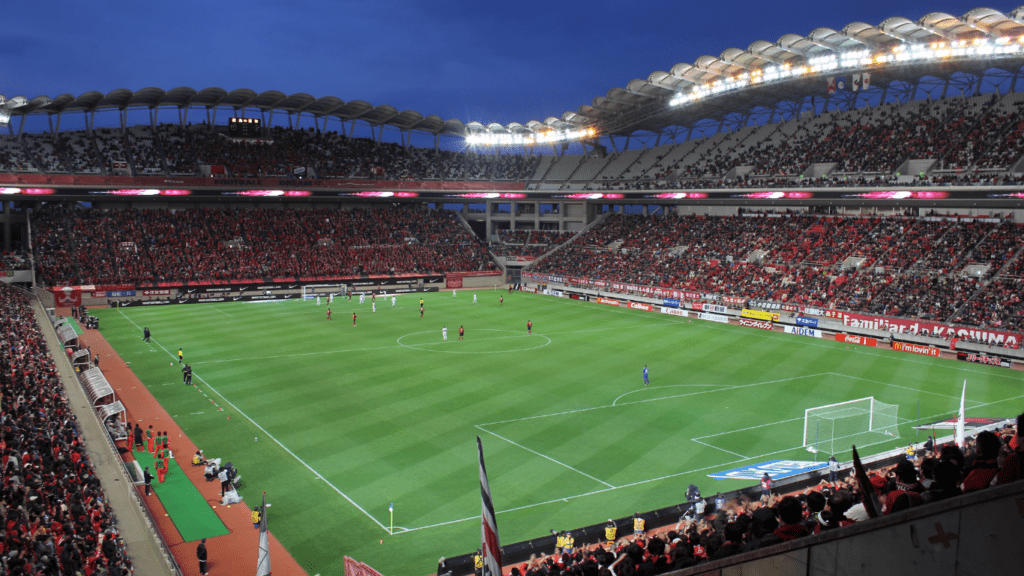The Evolution of Stadium Technology
Stadium technology has come a long way, reshaping how fans experience live sports events.
Historical Perspective
In the early 1900s, stadiums offered basic seating and simple scoreboards. Radios brought the first tech leap, letting fans follow games in real-time from their seats. During the 1960s, jumbotrons and in-stadium announcements began providing game highlights and updates.
Modern Innovations
Today’s stadiums integrate advanced technologies to maximize fan engagement. High-definition video boards display real-time stats and replays, giving everyone a front-row feel. Mobile apps offer personalized services, from seat upgrades to food delivery. Augmented reality enhances the viewing experience by overlaying digital information on the live action. Connectivity improvements, like 5G networks, ensure fans stay connected and share their experiences instantly.
Enhancing Fan Engagement
Technological advancements are changing how fans engage at live sports events. Implementations focus on interactive experiences and real-time data to offer a more immersive and connected environment.
Interactive Fan Zones
Interactive fan zones in stadiums facilitate active participation. These areas often feature VR booths, gaming stations, and team merchandise kiosks. VR booths let fans experience players’ perspectives, deepening their connection with the game. Gaming stations provide esports challenges, merging traditional sports with digital interactivity. Merchandise kiosks use touchscreens for easy browsing and quick purchases, streamlining the shopping experience.
Real-Time Statistics and Replays
- Real-time statistics and replays are crucial for enhancing fan engagement.
- High-definition screens display live stats, helping fans track players’ performances.
- Apps offer personalized stats based on users’ interests, elevating the experience for dedicated followers.
- Instant replays on video boards ensure fans don’t miss key moments, keeping them engaged throughout the event.
- Enhanced by 5G connectivity, these features keep information flow seamless and instant.
Stadium technologies are significantly elevating the fan experience, transforming venues from mere game spaces into interactive hubs.
Advanced Seating and Viewing Options

Advanced seating and viewing options are revolutionizing how fans experience live sports. Technologies like AR and luxury seating elevate the in-stadium atmosphere, making game days more immersive and engaging.
VIP and Luxury Seating
Stadiums are increasingly featuring VIP and luxury seating for an elevated experience. These exclusive areas offer amenities such as:
- private suites
- in-seat dining
- personalized services
For example, patrons can enjoy gourmet meals, climate-controlled environments, and premium parking, making their visit more comfortable and convenient. Additionally, some venues provide direct concierge services, ensuring a seamless and luxurious experience from arrival to departure.
Augmented Reality (AR) Viewing
Augmented reality viewing options are transforming the way fans watch games. AR enables stadium-goers to see real-time overlays of stats, player info, and interactive elements on their devices. Imagine watching a live game and seeing player trajectories, instant replays, and detailed analytics right on your phone or AR glasses. This technology adds a new layer of engagement, allowing fans to access a wealth of information and immersive visual experiences that go beyond what’s visible to the naked eye.
Food and Beverage Innovations
Stadiums are evolving to offer fans a seamless and enjoyable food and beverage experience. Key innovations are making it easier to enjoy high-quality meals without missing crucial game moments.
Mobile Ordering and Delivery
Stadiums are integrating mobile ordering systems through dedicated apps. Fans can order food and drinks from their seats and have them delivered directly. This eliminates long concession lines, enhancing convenience. For instance, some venues use QR codes on seats, allowing easy access to menus. Real-time order tracking provides status updates from the kitchen to delivery.
Unique Dining Experiences
In-stadium dining is shifting towards offering unique culinary experiences. Many arenas are collaborating with celebrity chefs to provide gourmet options, moving beyond traditional stadium fare. Pop-up restaurants and food trucks inside the stadium offer diverse choices, catering to various dietary needs. Additionally, some places feature open kitchens where fans can see meals being prepared, adding an interactive dining aspect to the game day.
Sustainability Initiatives
Sustainability in sports venues is becoming crucial. Stadiums are adopting practices that prioritize environmental responsibility.
Green Stadiums
Many modern stadiums are designed with green initiatives. For example, Mercedes-Benz Stadium has earned LEED Platinum certification. This Atlanta venue utilizes renewable energy sources, low-flow plumbing, and a comprehensive water reuse system. Solar panels and on-site urban farms are becoming common features. Another example is Levi’s Stadium, which incorporates a green roof that reduces heat island effect and improves insulation.
Waste Reduction Efforts
Reducing waste is key for sustainable stadiums. Many venues are implementing zero-waste strategies. By separating recyclables and composting food waste, stadiums reduce landfill contributions. Allegiant Stadium offers clear diversion goals, such as diverting 90% of waste from landfills through recycling and composting. Introducing reusable cups and utensils also helps minimize single-use plastics. Recycling stations and fan education programs further enhance these efforts.
Safety and Security Enhancements
Ensuring fans’ safety and security at stadiums is more crucial now than ever. Modern technology and innovative protocols are reshaping how we experience game days.
Contactless Entry and Payment
Numerous stadiums now feature contactless entry, enhancing safety and speeding up access. Scanners read digital tickets from mobile devices, reducing touchpoints and line congestion. For payments, contactless systems, including mobile wallets and tap-to-pay cards, further minimize physical interactions. For example, Levi’s Stadium in Santa Clara, CA, has fully adopted these systems, significantly improving fan convenience and safety.
Health and Safety Protocols
In light of recent global health concerns, stringent health and safety protocols are in place at many venues. Health screenings and temperature checks at entrances add a layer of security. Sanitizing stations are strategically located throughout the stadium. Stadiums like the AT&T Stadium in Arlington, TX, implement regular cleaning and disinfection routines, particularly in high-traffic areas. Enhanced ventilation systems also ensure better air quality for all attendees. These measures help fans enjoy the game without compromising their well-being.



